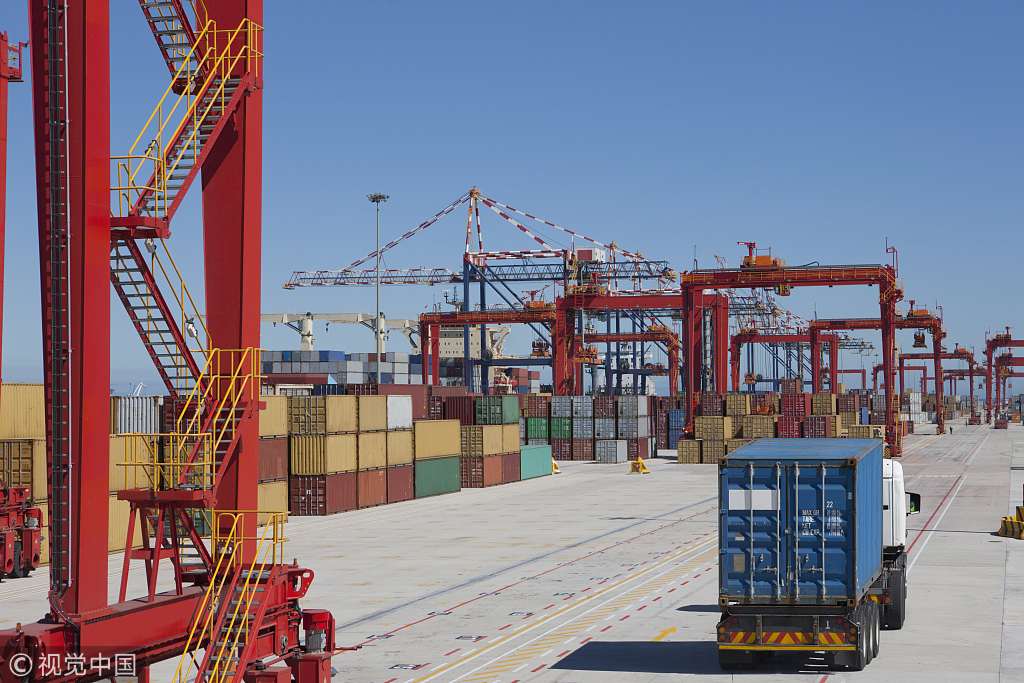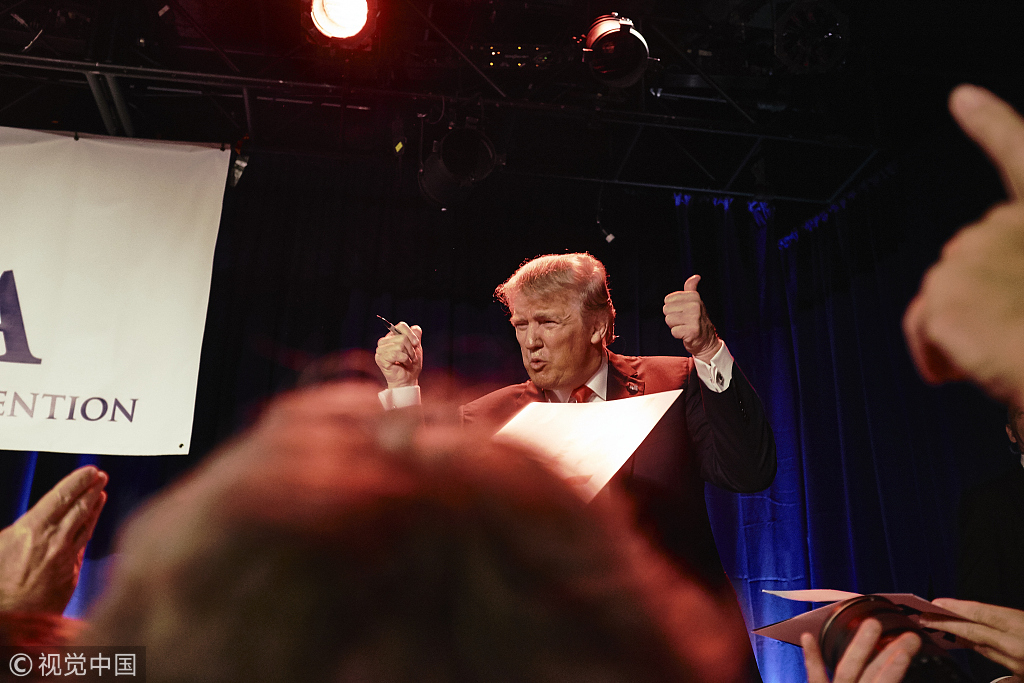
Analysis
15:56, 07-Mar-2019
Trump's tariff tantrums show no sign of ending
Updated
18:18, 07-Mar-2019
Bertram Niles

The news that the United States trade gap in goods last year reached its highest level since 2008 is unlikely to dissuade President Donald Trump from his hard-nosed tariffs-driven campaign to trim the deficit.
The day before the figures were released, Trump ratcheted up his drive by announcing the end of preferential tariff treatment for India and Turkey that allows billions of dollars' worth of exports to enter the U.S. duty-free.
The president began to wage his trade war in 2018 against China that ironically was a contributing factor to the deficit, as the extra duties he imposed helped dampen Chinese demand because of higher prices. He had also forced a renegotiation of the North American Free Trade Agreement with Canada and Mexico.
India's termination from the Generalized System of Preferences (GSP) follows its failure to provide the United States with assurances that it will provide "equitable and reasonable access to its markets in numerous sectors," the Office of the U.S. Trade Representative said. The action against Turkey follows an assessment that the country is sufficiently economically developed and should no longer benefit from preferential market access to the U.S. market.
The GSP was implemented in the 1970s to help exports of developing nations.
India, the largest beneficiary under the program, had exported 5.6 billion U.S. dollars of products to the U.S. duty-free in 2017. Turkey was No. 5 on the list, importing 1.7 billion dollars of products duty-free.
“India is a very high-tariff nation. They charge us a lot," Trump, who has long had the South Asian nation in his sights, told the Conservative Political Action Conference last Saturday.

The U.S. has invoked "national security and economic interests" in setting tariff policy. /VCG Photo
The U.S. has invoked "national security and economic interests" in setting tariff policy. /VCG Photo
India played down the impact of the U.S. action, with officials saying the preferential treatment brought an annual “actual benefit” on tariffs of just 190 million dollars. But they would be aware that the message being sent is that Washington will put pressure on India to secure greater market access for American goods.
Almost a year ago, India got its first taste of Trump's tariff attack when the U.S. imposed a 25-percent levy on steel and 10 percent on aluminum to "protect" U.S. national security and economic interests, grounds that experts suggested were aimed primarily against China.
India's subsequent request for an exemption was rejected, and last week, the government of Prime Minister Narendra Modi delayed until April 1 higher tariffs on some U.S. imports it had announced in response.
The two nations have a range of other concerns, such as e-commerce rules restricting how Internet giants such as Amazon can do business in India, but negotiations in the short-term may be complicated by India's upcoming general election.
As for Turkey, with which the U.S. has a trade surplus, experts see a much more explicit political agenda by the Trump administration at play.
The GSP move “is a political step aimed at preventing Turkey from purchasing S-400 missiles from Russia,” Ilter Turan, a professor of international relations at Istanbul's Bilgi University, was quoted by Bloomberg as saying.

Donald Trump has been told he had to "deliver some results" on tariffs. /VCG Photo
Donald Trump has been told he had to "deliver some results" on tariffs. /VCG Photo
NATO member Turkey has repeatedly said it is committed to buying the Russian missiles, despite warnings from the U.S.-led alliance that the S-400s cannot be integrated into the NATO air defense system.
The U.S. and Turkey have also clashed over Syria with Trump threatening in January to "devastate Turkey economically" if it attacks Kurdish forces in Syria following a planned pullout of U.S. troops.
Yet, it seems that there is some general realization that the GSP days of India and Turkey are over – and with some justification.
“It's meant for least-developed countries and India has graduated out of that,” conceded Monideepa Mukherjee, spokesperson for India's commerce ministry.
Still, the announcement has shown that Trump is prepared to use tariffs as a cudgel to try to achieve both economic and political objectives.
But many experts argue that, by themselves, they are a rough implement aimed at countries that America deems are using unfair practices to gain a competitive advantage. They note that other factors, such as the strengthening greenback making U.S. goods more expensive, made the trade gap worse.
Waning patience
The policy does not have much to show in the success column so far – American farmers are hurting as a result of the conflict with China and the deficit figures are a genuine blow – but given Trump's stridency on trade during his presidential campaign and subsequently, he is unlikely to be deterred.
Months ago, he pleaded for the farmers to “be a little patient” with the tariff war, but their patience may now be wearing thin.
“These folks are with you, they want to see you be successful,” Mike Rounds, a Republican senator from South Dakota, told the Washington Post, in a message to Trump. “But you're going to have to deliver some results."
And soon, the congressman may have added. The pressure is definitely on the president.
(If you want to contribute and have specific expertise, please contact us at opinions@cgtn.com.)

SITEMAP
Copyright © 2018 CGTN. Beijing ICP prepared NO.16065310-3
Copyright © 2018 CGTN. Beijing ICP prepared NO.16065310-3